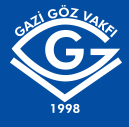Retina-Vitreous
2012 , Vol 20 , Num 4
Diffuse Photoreceptor Dystrophies
1M.D. Asistant Professor, Baskent University, Department of Ophthalmology, Ankara/TURKEY2M.D., Baskent University, Department of Ophthalmology, Ankara/TURKEY
3M.D. Professor, Baskent University, Department of Ophthalmology, Ankara/TURKEY Cone rod dystrophies (CRDs) are retinal dystrophies caused by the loss of cone receptors (congenital loss or late-onset degeneration) or abnormalities of cone pigments. Mostly CRDs are non syndromic, but they can be part of several syndromes, such as the Bardet Biedl syndrome or Spinocerebellar Ataxia Type 7. Retinitis pigmentosa (RP) is an inherited retinal dystrophy that is characterized by the progressive dysfunction of photoreceptors and pigment epithelial complex of the retina. Although RP being usually non syndromic, it can be a part of some syndromes like the Usher syndrome. RP begins with night blindness continuous with progressive loss of peripheral visual field. For both CRDs and RP, the clinical diagnosis is based on clinical history, fundus examination and electroretinogram (ERG). Genetic counseling is recommended due to the molecular diagnosis being made. To date, there is no therapy that stops the progress of the disease. The current management includes vitamin supplementation to slow down the degenerative process, trying to treat ocular complications (cataract, macular edema) and providing psychological support to blind patients. Gene therapy, neuroprotection, retinal prosthesis are new therapeutic strategies. More research is necessary for obtaining beneficial outcomes from these new therapeutic strategies. Keywords : Cone rod dystrophies, retinitis pigmentosa, clinical findings, treatment





